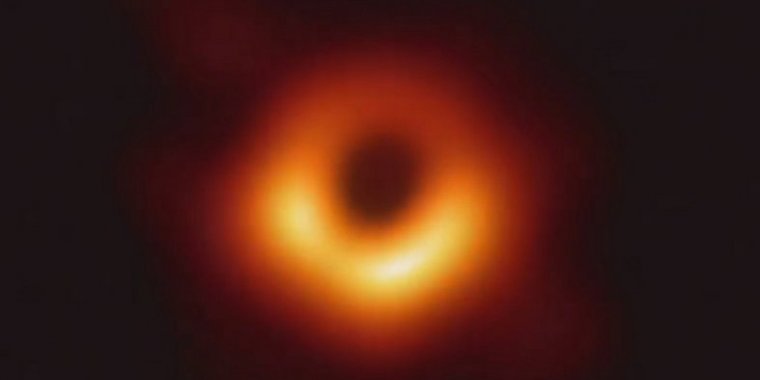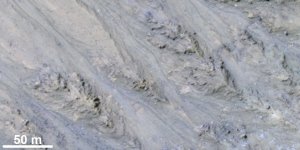| News / Science News |
Black Hole Image Makes History
A black hole and its shadow have been captured in an image for the first time, a historic feat by an international network of radio telescopes called the Event Horizon Telescope (EHT).

Scientists have obtained the first image of a black hole, using Event Horizon Telescope observations of the center of the galaxy M87. The image shows a bright ring formed as light bends in the intense gravity around a black hole. Photo: Event Horizon Telescope Collaboration
A black hole is an extremely dense object from which no light can escape. Anything that comes within a black hole's "event horizon," its point of no return, will be consumed, never to re-emerge, because of the black hole's unimaginably strong gravity.
By its very nature, a black hole cannot be seen, but the hot disk of material that encircles it shines bright. Against a bright backdrop, such as this disk, a black hole appears to cast a shadow.
The stunning new image shows the shadow of the supermassive black hole in the center of Messier 87 (M87), an elliptical galaxy some 55 million light-years from Earth. This black hole is 6.5 billion times the mass of the Sun. Catching its shadow involved eight ground-based radio telescopes around the globe, operating together as if they were one telescope the size of our entire planet.
To complement the EHT findings, several NASA spacecraft were part of a large effort, coordinated by the EHT's Multiwavelength Working Group, to observe the black hole using different wavelengths of light.
As part of this effort, NASA's Chandra X-ray Observatory, Nuclear Spectroscopic Telescope Array (NuSTAR) and Neil Gehrels Swift Observatory space telescope missions, all attuned to different varieties of X-ray light, turned their gaze to the M87 black hole around the same time as the EHT in April 2017.
NASA's Fermi Gamma-ray Space Telescope was also watching for changes in gamma-ray light from M87 during the EHT observations. If EHT observed changes in the structure of the black hole's environment, data from these missions and other telescopes could be used to help figure out what was going on.
There are many remaining questions about black holes that the coordinated NASA observations may help answer. Mysteries linger about why particles get such a huge energy boost around black holes, forming dramatic jets that surge away from the poles of black holes at nearly the speed of light. When material falls into the black hole, where does the energy go? (NASA)
YOU MAY ALSO LIKE




